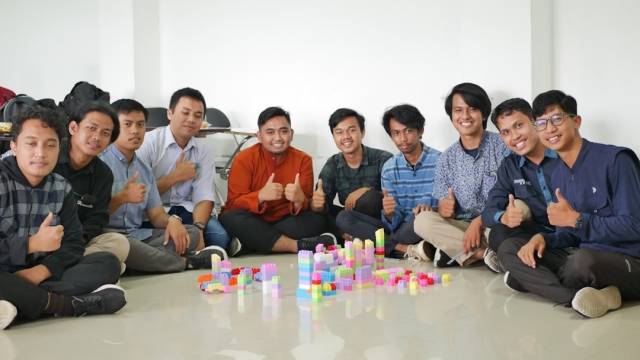Unveiling the Dazzling World of Deepfake Technology

Deepfake technology has emerged as a captivating phenomenon, blurring the lines between reality and fiction with its astonishing capabilities. By employing advanced machine learning algorithms, deepfake technology enables the manipulation of audio and visual content, allowing for the creation of highly realistic videos and images that can deceive even the most discerning eye. With its profound implications for various fields, from entertainment to politics, this technology has captured the world’s attention and raised intriguing ethical and security concerns.
At its core, deepfake technology utilizes artificial intelligence to superimpose or replace one person’s face with another in videos, ultimately creating seemingly authentic footage of individuals saying or doing things they never actually did. The sophistication and accuracy of these manipulated videos are nothing short of mesmerizing, as they seamlessly blend facial expressions, mannerisms, and voices, effectively tricking unsuspecting viewers into believing that the depicted events actually occurred. This groundbreaking technology not only challenges the authenticity of visual media but also raises critical questions about the trustworthiness of what we see and hear in our increasingly digital world.
While deepfake technology has garnered attention primarily for its entertainment value and viral potential, its implications extend far beyond harmless fun. The ability to manipulate and falsify video content has significant implications in journalism, politics, and even criminal activities. With the advent of deepfakes, the line between fact and fiction becomes increasingly blurred, undermining public trust and potentially creating fertile ground for the spread of misinformation. Consequently, establishing effective measures to detect and counteract deepfakes has become a pressing concern for researchers, technology companies, and policymakers alike.
As we delve deeper into the dazzling world of deepfake technology, it is imperative to unravel its intricacies, appreciating both its creative potential and the risks it presents. By exploring the various applications, impact, and challenges associated with deepfakes, we can gain a deeper understanding of how this technology may shape our future and how we can navigate its complex ethical and legal dimensions. The journey ahead promises to be a fascinating one, as we uncover the depths of this groundbreaking technological frontier while grappling with the imperative of maintaining trust and safeguarding the authenticity of our digital world.
Understanding Deepfake Technology
Deepfake technology is a revolutionary advancement in the field of artificial intelligence. It enables the creation of highly realistic videos or images that can portray individuals doing or saying things that they never actually did. This technology uses sophisticated algorithms and machine learning techniques to manipulate and synthesize visual and audio content.
At the core of deepfake technology lies the ability to convincingly replace the face of a person in a video with the face of another individual. By analyzing large datasets, the algorithms can learn the unique facial expressions, speech patterns, and mannerisms of the target person. These learned characteristics are then applied to generate a new video that appears authentic and seamless.
Deepfake technology has gained significant attention due to its potential implications on various aspects of society. It raises concerns about the authenticity and trustworthiness of digital media. The ease with which deepfake videos can be created has sparked fears of misuse, such as spreading misinformation, slander, and even deepening the existing issues of fake news.
Despite its potential negative implications, deepfake technology also holds promise in various creative and entertainment applications. It allows for realistic visual effects in movies, enabling filmmakers to seamlessly integrate actors into scenes or bring deceased actors back to the screen. Additionally, it offers possibilities in the world of digital art and computer graphics, providing artists with new tools for expression and experimentation.
In conclusion, deepfake technology represents a significant leap forward in the realm of artificial intelligence. While it raises concerns about trust and authenticity in digital media, it also opens doors to new opportunities in various fields. As this technology continues to evolve, it becomes crucial to navigate the ethical and societal challenges it presents while embracing its potential for positive innovation.
Implications and Concerns
As with any emerging technology, the world of deepfake technology brings forth a myriad of implications and concerns. These implications span across various domains, including politics, entertainment, and personal privacy.
First and foremost, deepfakes have the potential to significantly impact politics and elections. With the ability to manipulate and alter videos, individuals can create convincing fake videos of political figures, potentially causing massive misinformation campaigns and tarnishing the credibility of public figures.
In the realm of entertainment, deepfakes raise concerns about intellectual property rights. As the technology advances, it may become easier for individuals to create and distribute counterfeit videos featuring celebrities or copyrighted characters. This not only poses a threat to the entertainment industry, but also challenges the authenticity of content consumed by the public.
On an individual level, deepfakes pose significant risks to personal privacy. With the ability to superimpose someone’s face onto another person’s body, innocent individuals could be falsely implicated in compromising or illegal activities. In addition, deepfake technology raises concerns about consent and the unauthorized use of one’s likeness, further eroding the boundaries of privacy.
In conclusion, while deepfake technology offers exciting possibilities, it also brings along significant implications and concerns. From the manipulation of political discourse to the infringement of intellectual property rights and personal privacy, the consequences of deepfakes must be carefully considered and addressed as this technology continues to evolve.
Combatting Deepfake Threats
The rise of deepfake technology has undoubtedly brought about significant challenges and concerns. As this technology continues to advance, it becomes crucial to develop effective strategies to combat the threats it poses.
One key aspect of countering deepfakes is raising awareness and educating the public about their existence and potential risks. By providing accurate information and promoting media literacy, people can become more discerning consumers of digital content. Recognizing the signs of deepfakes and understanding their potential consequences empowers individuals to approach online information with caution.
In addition to education, technological advancements play a vital role in combating deepfake threats. Researchers are actively working on developing sophisticated algorithms and tools that can detect and verify the authenticity of multimedia content. By leveraging artificial intelligence and machine learning, these systems can analyze various aspects such as facial movements, audio inconsistencies, and visual artifacts to determine the likelihood of a deepfake.
Furthermore, collaboration between different stakeholders is crucial for effectively combating deepfake threats. Government agencies, technology companies, and social media platforms need to work together to develop and implement policies and regulations that address the challenges posed by deepfakes. By sharing resources, expertise, and best practices, these entities can create a more robust defense against the misuse of deepfake technology.
Overall, combatting deepfake threats requires a multi-faceted approach that combines education, technological advancements, and collaborative efforts. By staying informed, leveraging advanced detection tools, and working together, we can strive towards a safer digital environment where the risks associated with deepfakes are mitigated.


